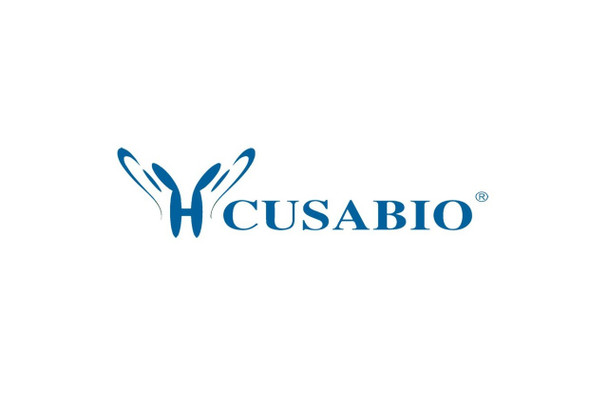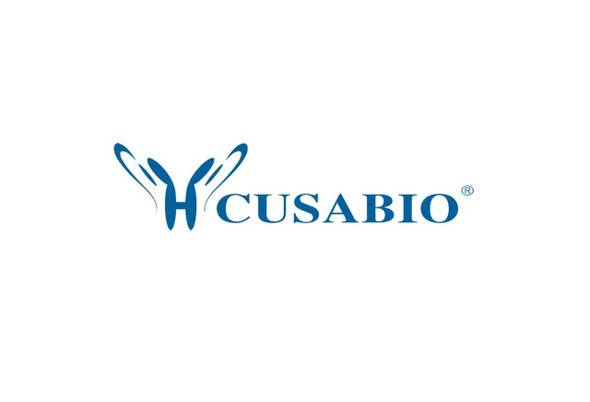Cusabio Mouse Recombinants
Recombinant Mouse Bis (5'-adenosyl) -triphosphatase (Fhit) | CSB-YP530819MO
- SKU:
- CSB-YP530819MO
- Availability:
- 25 - 35 Working Days
Description
Recombinant Mouse Bis (5'-adenosyl) -triphosphatase (Fhit) | CSB-YP530819MO | Cusabio
Alternative Name(s): AP3A hydrolase ;AP3AaseDiadenosine 5',5'''-P1,P3-triphosphate hydrolaseDinucleosidetriphosphataseFragile histidine triad protein
Gene Names: Fhit
Research Areas: Others
Organism: Mus musculus (Mouse)
AA Sequence: SFRFGQHLIKPSVVFLKTELSFALVNRKPVVPGHVLVCPLRPVERFRDLHPDEVADLFQVTQRVGTVVEKHFQGTSITFSMQDGPEAGQTVKHVHVHVLPRKAGDFPRNDNIYDELQKHDREEEDSPAFWRSEKEMAAEAEALRVYFQA
Source: Yeast
Tag Info: N-terminal 6xHis-tagged
Expression Region: 2-150aa
Sequence Info: Full Length of Mature Protein
MW: 19.1 kDa
Purity: Greater than 90% as determined by SDS-PAGE.
Relevance: Cleaves P(1)-P(3)-bis(5'-adenosyl) triphosphate (Ap3A) to yield AMP and ADP. Can also hydrolyze P(1)-P(4)-bis(5'-adenosyl) tetraphosphate (Ap4A), but has extrely low activity with ATP. Modulates transcriptional activation by CTNNB1 and thereby contributes to regulate the expression of genes essential for cell proliferation and survival, such as CCND1 and BIRC5. Plays a role in the induction of apoptosis via SRC and AKT1 signaling pathways. Inhibits MDM2-mediated proteasomal degradation of p53/TP53 and thereby plays a role in p53/TP53-mediated apoptosis. Induction of apoptosis depends on the ability of FHIT to bind P(1)-P(3)-bis(5'-adenosyl) triphosphate or related compounds, but does not require its catalytic activity . Functions as tumor suppressor.
Reference: Nitrilase and Fhit homologs are encoded as fusion proteins in Drosophila melanogaster and Caenorhabditis elegans.Pekarsky Y., Campiglio M., Siprashvili Z., Druck T., Sedkov Y., Tillib S., Draganescu A., Wermuth P., Rothman J.H., Huebner K., Buchberg A.M., Mazo A., Brenner C., Croce C.M.Proc. Natl. Acad. Sci. U.S.A. 95:8744-8749(1998)
Storage: The shelf life is related to many factors, storage state, buffer ingredients, storage temperature and the stability of the protein itself. Generally, the shelf life of liquid form is 6 months at -20?/-80?. The shelf life of lyophilized form is 12 months at -20?/-80?.
Notes: Repeated freezing and thawing is not recommended. Store working aliquots at 4? for up to one week.
Function: Cleaves P(1)-P(3)-bis(5'-adenosyl) triphosphate (Ap3A) to yield AMP and ADP. Can also hydrolyze P(1)-P(4)-bis(5'-adenosyl) tetraphosphate (Ap4A), but has extremely low activity with ATP. Modulates transcriptional activation by CTNNB1 and thereby contributes to regulate the expression of genes essential for cell proliferation and survival, such as CCND1 and BIRC5. Plays a role in the induction of apoptosis via SRC and AKT1 signaling pathways. Inhibits MDM2-mediated proteasomal degradation of p53/TP53 and thereby plays a role in p53/TP53-mediated apoptosis. Induction of apoptosis depends on the ability of FHIT to bind P(1)-P(3)-bis(5'-adenosyl) triphosphate or related compounds, but does not require its catalytic activity (By similarity). Functions as tumor suppressor.
Involvement in disease:
Subcellular Location: Cytoplasm
Protein Families:
Tissue Specificity: Expressed in heart, brain, lung and skeletal muscle. Particularly strong expression in liver, testis and kidney, where it is confined to the tubular epithelium.
Paythway:
Form: Liquid or Lyophilized powder
Buffer: If the delivery form is liquid, the default storage buffer is Tris/PBS-based buffer, 5%-50% glycerol. If the delivery form is lyophilized powder, the buffer before lyophilization is Tris/PBS-based buffer, 6% Trehalose, pH 8.0.
Reconstitution: We recommend that this vial be briefly centrifuged prior to opening to bring the contents to the bottom. Please reconstitute protein in deionized sterile water to a concentration of 0.1-1.0 mg/mL.We recommend to add 5-50% of glycerol (final concentration) and aliquot for long-term storage at -20?/-80?. Our default final concentration of glycerol is 50%. Customers could use it as reference.
Uniprot ID: O89106
HGNC Database Link: N/A
UniGene Database Link: UniGene
KEGG Database Link: KEGG
STRING Database Link: STRING
OMIM Database Link: N/A










